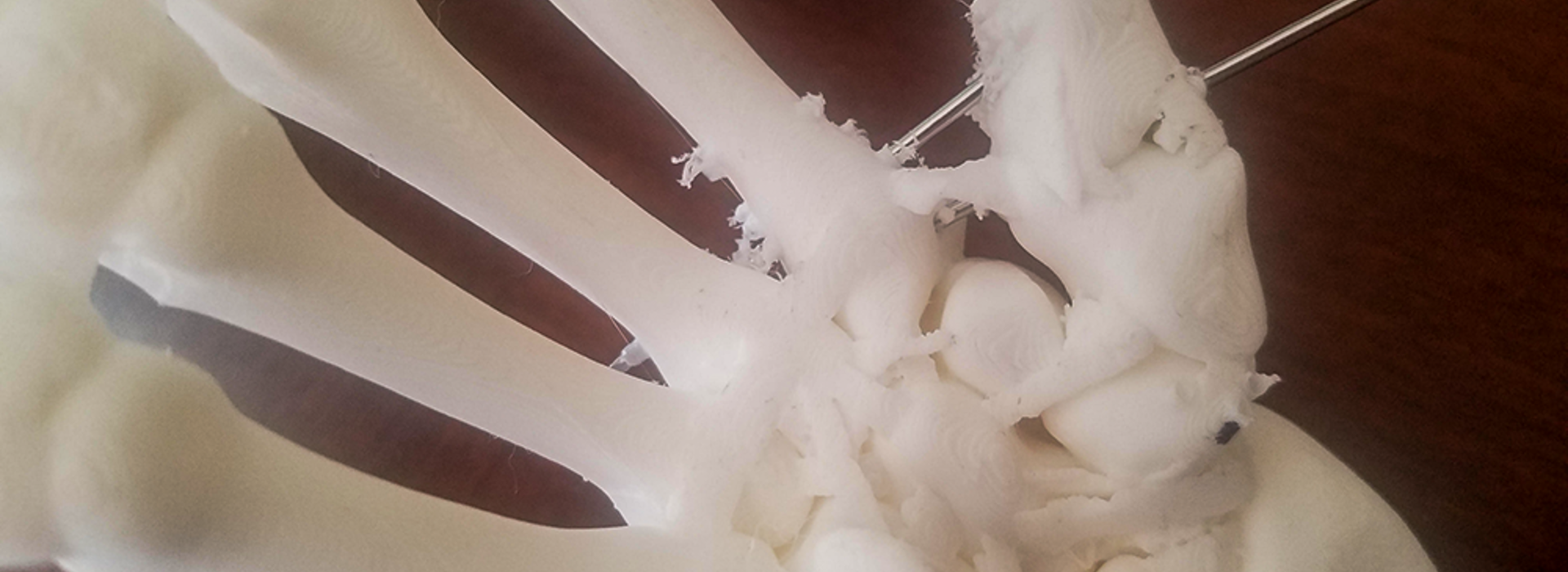
Long-standing ‘Hand Skills Day’ Simulation Goes Virtual
Hands-on training is a vital element of any orthopedic surgery residency program. Since many elective procedures have been limited throughout the COVID-19 pandemic, residencies have had to balance operative learning with the health and safety of patients and providers. The University of Minnesota Medical School's Department of Orthopedic Surgery has embraced virtual learning, looking for ways to deliver quality education outside of the operating room.
“We’ve kept up, if not intensified our education program throughout the COVID-19 pandemic,” said Ann Van Heest, MD, a professor in the Department of Orthopedic Surgery and residency program director. “When elective surgeries were reduced, we initiated an accelerated lecture series and transitioned to remote Grand Rounds and core curriculum sessions to enhance resident learning. We also started virtual rotations for medical students interested in our program, so our circumstances have allowed us to expand to a larger audience.”
In early August, the department hosted the first-ever virtual James House, MD, Hand Skills Lectureship and Educational Workshop, a long-standing simulation program supported by Professor Emeritus James House, MD. During the simulation, residents learned scaphoid, Bennet and phalanx fracture pinning using a 3D-printed hand model.
Trainees attached their cell phones to a gooseneck to mimic fluoroscopy, and then inserted pins into the sawbones model using a drill, all while viewing the technique through their phone’s screen. Supplies were distributed in advance so they could perform the activity from home or at rotation sites, limiting potential COVID-19 exposure between residents. A Medical School COVID-19 Medical Education Innovation Grant, spearheaded by associate professors Alicia Harrison, MD, and Marc Tompkins, MD, and in partnership with the Earl E. Bakken Medical Devices Center (MDC), funded the 3D printing.
Justin Jabara, MD, a second-year resident, was rotating at the M Health Fairview University of Minnesota Medical Center at the onset of the pandemic. One of the few cases that Dr. Jabara had the opportunity to participate in was a fracture at the base of the patient’s thumb (known as a Bennet fracture). He performed a closed reduction and percutaneous fixation, a procedure where the fracture is reduced without an incision and then stabilized with wires.
“During Hand Skills Day, I was able to replicate the same procedure on a 3D-printed hand,” Dr. Jabara said. “Being able to repeat the case at home using similar tools allowed me to learn more about the anatomy and critically reflect on the case I performed in person.”
The printed hand also helped him study the anatomy more comprehensively.
“While I always try to understand complex anatomy preoperatively, it’s difficult to conceptualize on paper or a computer screen,” he said. “The virtual interface at Hand Skills Day, in combination with the 3D-printed sawbones, was a helpful way to rehearse the procedure.”
The COVID-19 Medical Education Innovation Grant also funded a web-based program that allows users to observe a surgery on a split-screen with the related 3D anatomy. The 3D model can be manipulated and studied on a computer or using a virtual reality (VR) headset. This helps trainees familiarize themselves with the overall shape and anatomical relationships of bones.
“The virtual reality software could be helpful in preoperative planning, particularly for junior residents,” said Kelsey Wise, MD, a fourth-year resident. “Having an idea of the steps and process prior to entering the operating room allows residents to gain more during the case.”
The program can also be used in surgical planning, templating and practicing implant placement using the patient’s anatomy captured from a CT scan. Still, Dr. Van Heest says it’s imperative that skills learned virtually can be transferred to actual patient care.
“When you’re first training to be a surgeon, learning the basic skills and steps of the surgery is important,” Dr. Van Heest explained. “If those basics can be learned in a lab versus an operating room, trainees can be onboarded more efficiently because they already know the fundamentals of the procedure.”
The Department of Orthopedic Surgery incorporates a number of simulated labs into the residency program. G1 Skills Week includes a day of instruction and hands-on practice of foundational orthopedic skills (like simulated wire navigation, fracture reduction with external fixator placement and micro-suturing) at each clinical rotation site.
Eight anatomy labs take place at TRIA Orthopedic Center during the second year of residency in addition to the Gillette Simulation Series, which teaches essential pediatric surgical skills. Residents participate in an Arthroscopy Skills Lab throughout their second to fifth years, learning fundamental and advanced shoulder and knee procedures. While cadavers have been used throughout the history of surgery to refine skills, they’re not as readily available during the COVID-19 pandemic.
“Exercising surgical techniques and planning outside the operating room is nothing new, but with the advent of 3D printing and VR interfacing, there are unique improvements we can make as technology advances,” Dr. Jabara said. “These are important tools to improve as a surgeon.”